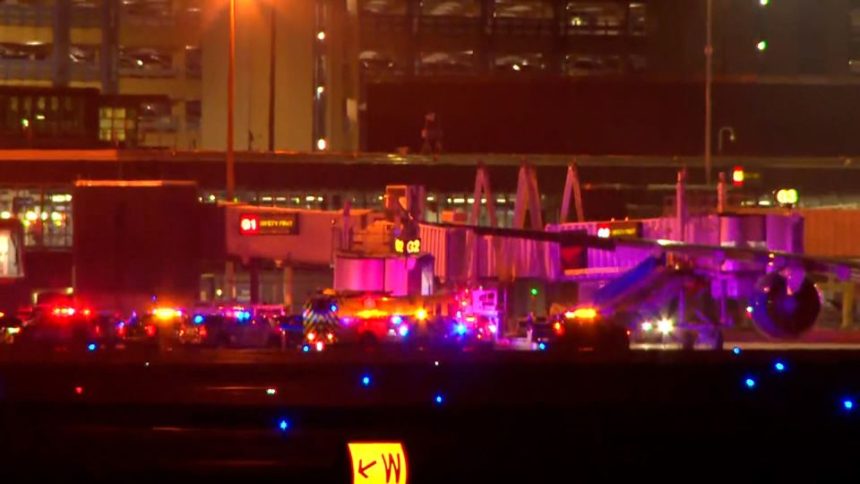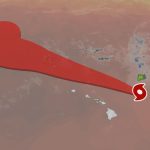Turbulence that injured more than a dozen people on a Delta Air Lines flight came with little warning to the pilots, even though they knew they were near thunderstorms, according to a new preliminary report from the National Transportation Safety Board.
The seat belt sign was off on July 30 when service carts, flight attendants, and unbelted passengers were suddenly thrown toward the plane’s ceiling.
The pilots of Delta Flight 56, an Airbus A330, were flying from Salt Lake City to Amsterdam when violent turbulence rocked the plane near Creston, Wyoming.
Twenty-five people on board, including seven crew members, were taken to hospitals following an emergency landing in Minneapolis. The plane was carrying 275 passengers and 13 crew members.
“A review of preliminary flight data recorder information revealed that the upset lasted approximately 2.5 minutes,” the NTSB said.
Plane service carts, food items thrown about after turbulence onboard Delta Flight 56. – Obtained by KSTU
The report notes the plane exceeded its maximum allowable speed during the turbulence, climbing and descending rapidly three times. G-forces increased to 1.75 times the force of gravity then dropped to less than zero gravity—known as negative g-force—causing some passengers to slam into the plane’s interior.
Southwestern Wyoming had been identified as a potential trouble spot by federal aviation forecasters earlier in the day. However, while flying at 35,000 feet, the turbulence predicted on the crew’s iPad was “green,” and pilots observed “only light cirrus clouds,” according to the report.
The cabin crew was in the middle of meal service when the rough turbulence started. The violent up and down cycles were strong enough to disengage the plane’s autopilot system and cause minor damage to the plane’s interior as everything that wasn’t strapped down went flying.

Meal service items scattered by severe turbulence on a Delta Air Lines Flight 56 on July 30, 2025 – Ricardo Hoogesteger
An off-duty first officer, who had been in the crew rest bunk, walked through the cabin to assess the damage, according to the report while a passenger who was a physician assistant helped the injured crew with triage. After the relief first officer reported back to the cockpit, the crew declared an emergency with air traffic control and diverted to Minneapolis.
Ultimately, the NTSB classified injuries as two on board with serious injuries and five people with minor injuries.
The NTSB investigation is still ongoing, and the agency is still reviewing flight data and cockpit voice recorders at its lab in Washington, D.C.
A final report, including any probable cause of the incident, will not be published until 12 to 18 months after the incident.
For more CNN news and newsletters create an account at CNN.com









